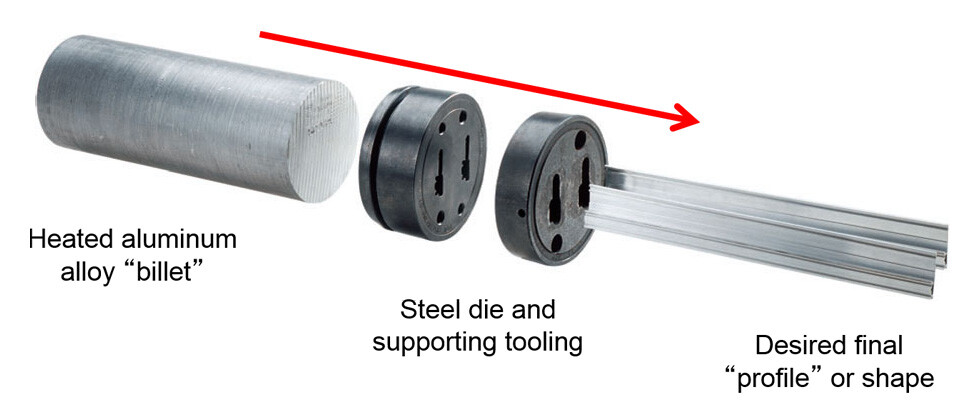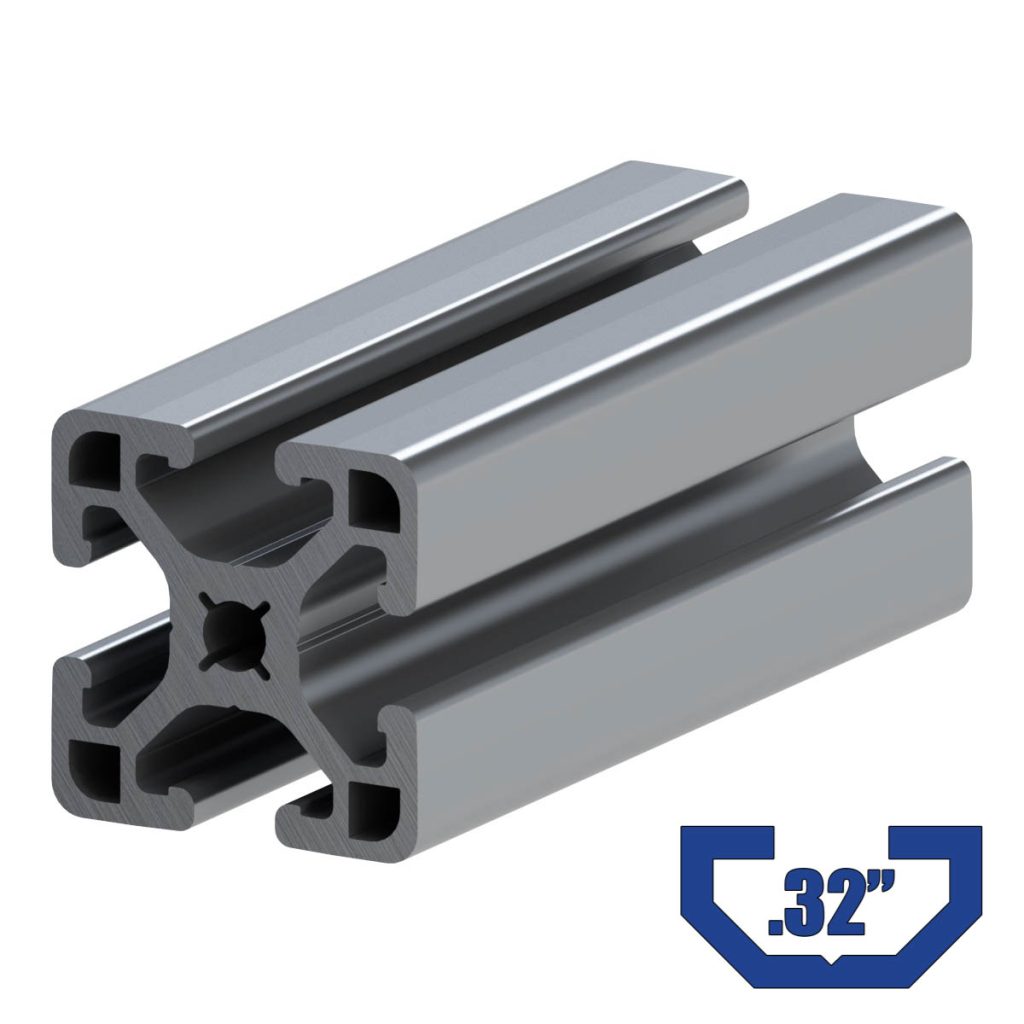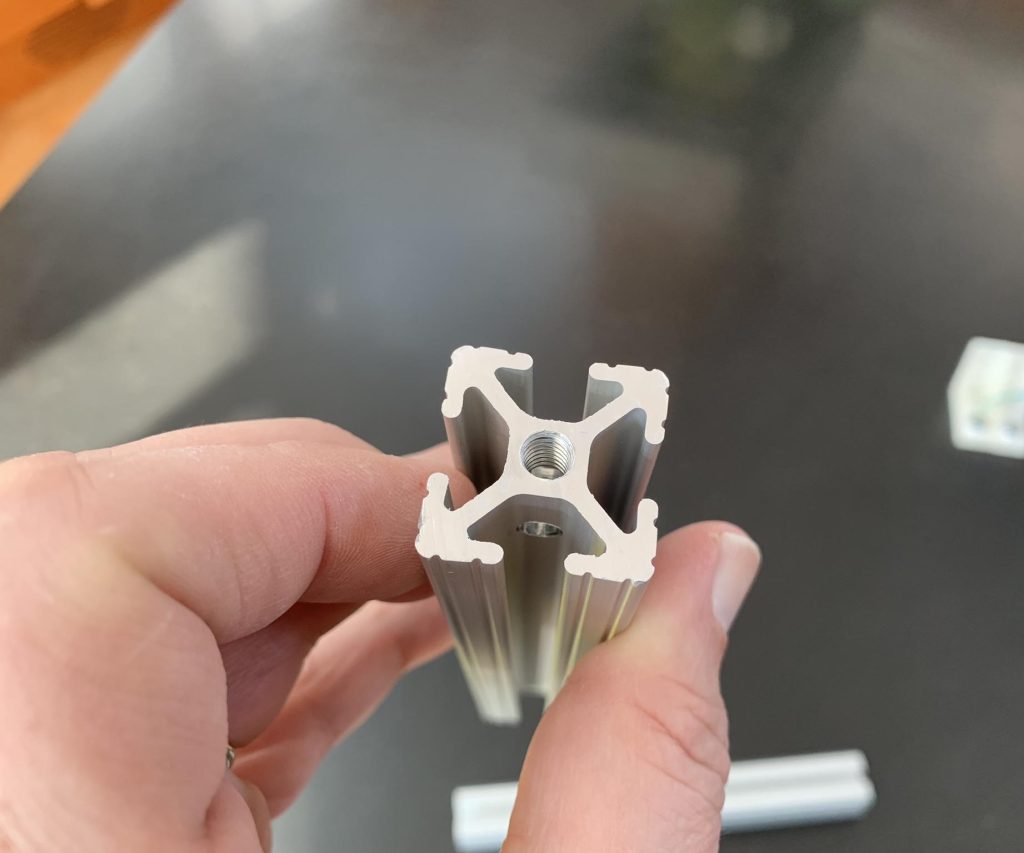Table of Contents
Aluminum extrusion is a popular process used to create a wide range of products with various shapes and sizes. It’s a versatile manufacturing method that has been used in various industries for decades. However, tapping aluminum extrusion can be quite challenging, especially for those who are new to the process.
To help you overcome this hurdle, we’ve put together some essential tips and tricks on how to tap aluminum extrusion. Whether you’re a seasoned professional or a beginner, this guide will provide you with the necessary information to get the job done right. So, let’s dive in and explore the world of tapping aluminum extrusion!
How to Tap Aluminum Extrusion?
To tap aluminum extrusion, follow these steps:
- Choose the appropriate tap size for the hole size required.
- Place the aluminum extrusion securely in a vise or clamp.
- Use a center punch to mark the location where the hole needs to be tapped.
- Use a drill bit to drill a hole in the aluminum extrusion at the marked location.
- Apply a tapping lubricant to the tap and the hole.
- Insert the tap into the hole and turn it clockwise.
- Continue turning the tap until the desired threads are formed.
How to Tap Aluminum Extrusion?
Aluminum extrusion is a popular manufacturing technique used to create a wide range of products. One of the key steps in the manufacturing process is tapping, which involves creating internal threads in the extruded aluminum. In this article, we’ll discuss the steps involved in tapping aluminum extrusion and some important considerations to keep in mind.
Step 1: Choose the Right Tapping Tool
Before you can begin tapping aluminum extrusion, you’ll need to choose the right tapping tool. There are a few different types of taps that can be used for this purpose, including hand taps, machine taps, and spiral point taps. Hand taps are the most common type of tap used for tapping aluminum extrusion, as they are easy to use and require minimal setup.
When choosing a hand tap, it’s important to consider the diameter and pitch of the thread that you need to create. You should also choose a tap with a sharp cutting edge, as this will help to ensure a clean and accurate cut.
Step 2: Prepare the Aluminum Extrusion
Once you have your tapping tool, you’ll need to prepare the aluminum extrusion for tapping. Start by measuring and marking the location where you want to create the internal threads. Then, use a center punch or other tool to create a small divot in the center of the mark. This will help to guide the tap and ensure that it stays centered during the tapping process.
Step 3: Begin Tapping
With the aluminum extrusion prepared, it’s time to begin tapping. Insert the tap into the hole that you created in step 2 and begin turning it clockwise. Apply a moderate amount of pressure as you turn the tap, but be careful not to force it too hard, as this can cause the tap to break.
As you turn the tap, it will begin to cut into the aluminum and create the internal threads. Continue turning the tap until you have created the desired depth of thread.
Step 4: Clean the Tap
After you have finished tapping the aluminum extrusion, it’s important to clean the tap to remove any metal shavings or debris. Use a brush or other tool to carefully remove any debris from the cutting edges of the tap. You can also use a lubricant or cutting oil to help remove any debris and protect the tap from wear and tear.
Step 5: Inspect the Threads
Once you have finished tapping the aluminum extrusion and cleaned the tap, it’s important to inspect the threads to ensure that they are clean and accurate. Use a thread gauge or other tool to check the diameter and pitch of the threads. If necessary, you can use a thread chaser or other tool to clean up any rough edges or imperfections in the threads.
Benefits of Tapping Aluminum Extrusion
Tapping aluminum extrusion offers a number of benefits, including:
– Increased versatility: Tapping allows you to create internal threads in aluminum extrusion, making it easier to attach other components or create a secure connection.
– Improved strength: By tapping the aluminum extrusion, you create a stronger and more secure connection than you would with other attachment methods.
– Cost-effective: Tapping is a relatively simple and cost-effective process, making it a popular manufacturing technique for a wide range of products.
Tapping Aluminum Extrusion vs. Other Attachment Methods
While tapping is a popular attachment method for aluminum extrusion, there are other methods that can be used as well. Some of these methods include:
– Welding: Welding can be used to attach aluminum extrusion components together, but it requires specialized equipment and can be more time-consuming and expensive than tapping.
– Adhesive bonding: Adhesive bonding can be a good option for attaching aluminum extrusion components, but it may not be as strong or secure as tapping.
– Mechanical fasteners: Mechanical fasteners such as screws or bolts can be used to attach aluminum extrusion components together, but they may be less secure than tapping and can add extra weight to the product.
Conclusion
Tapping aluminum extrusion is a cost-effective and versatile manufacturing technique that allows you to create internal threads in aluminum extrusion. By following the steps outlined in this article, you can tap aluminum extrusion with ease and confidence. With the right tapping tool and a little bit of practice, you can create strong and secure connections that will stand up to the test of time.
Freequently Asked Questions
Here are the answers to some of the most frequently asked questions about how to tap aluminum extrusion.
What is aluminum extrusion?
Aluminum extrusion is a process of shaping aluminum by forcing it through a die. The die is a specially shaped opening that gives the aluminum its desired shape. Extruded aluminum can be used for a wide range of applications, from building materials to automotive parts.
When tapping aluminum extrusion, it is important to select the right tapping tool and technique to avoid damaging the material. The most common tapping tools for aluminum extrusion are spiral point taps and spiral flute taps.
What are the benefits of tapping aluminum extrusion?
Tapping aluminum extrusion allows you to create threaded holes that can be used to attach other components to the extruded aluminum. This is particularly useful in construction and manufacturing applications where the extruded aluminum is used as a structural element.
When tapping aluminum extrusion, it is important to use the right lubricant to prevent damage to the material and ensure a clean, accurate cut. Aluminum tapping lubricants are specifically designed for this purpose and should be used in all tapping operations.
What are the common challenges when tapping aluminum extrusion?
One of the biggest challenges when tapping aluminum extrusion is the risk of chipping or cracking the material. This is particularly true when using a tapping tool that is not designed for use with aluminum. It is important to choose the right tool and technique to avoid these issues.
Another common challenge when tapping aluminum extrusion is the risk of overheating the material. This can cause the material to warp or deform, which can compromise its strength and durability. It is important to use the right lubricant and tapping speed to avoid overheating the material.
What is the best lubricant to use when tapping aluminum extrusion?
The best lubricant to use when tapping aluminum extrusion is a specialized aluminum tapping lubricant. These lubricants are designed to provide the right amount of lubrication without damaging the material or leaving residue that can interfere with the thread. They are also designed to dissipate heat and reduce friction, which helps to prolong the life of the tapping tool and improve the accuracy of the cut.
When selecting an aluminum tapping lubricant, it is important to choose a product that is specifically designed for use with aluminum extrusion. This will ensure that the lubricant provides the right level of protection and performance for the material.
What are the best practices for tapping aluminum extrusion?
The best practices for tapping aluminum extrusion include selecting the right tapping tool and lubricant, using the right tapping speed, and ensuring that the material is properly secured. It is also important to use a tapping tool that is designed for use with aluminum extrusion to avoid damaging the material or compromising the quality of the thread.
Other best practices for tapping aluminum extrusion include using a tapping guide to ensure that the tap is aligned with the hole, using a cutting fluid to help dissipate heat and reduce friction, and inspecting the tap regularly to ensure that it is still sharp and in good condition.
In conclusion, tapping aluminum extrusion may seem like a daunting task, but with the right tools and techniques, it can be easily accomplished. Remember to choose the appropriate tap size and type for the job, use cutting fluid to prevent chips and binding, and maintain consistent pressure and speed during the tapping process. With these tips in mind, you’ll be able to tap aluminum extrusion like a pro in no time.
Additionally, it’s important to note that safety should always be a top priority when working with power tools and machinery. Be sure to wear protective gear such as gloves, eye goggles, and ear plugs to prevent injury. Always follow the manufacturer’s instructions and guidelines for the tools and equipment you are using.
Lastly, don’t be afraid to ask for help or consult with a professional if you are unsure about any aspect of the tapping process. With practice and patience, you’ll become more confident and skilled in tapping aluminum extrusion, and be able to take on more challenging projects in the future.
Request a quote today!
[contact-form-7 id="1578" title="Contact form"]
Please compress the file into a ZIP or RAR file before uploading. Alternatively, send through your RFQ by email.
enquires@unitymanufacture.com





